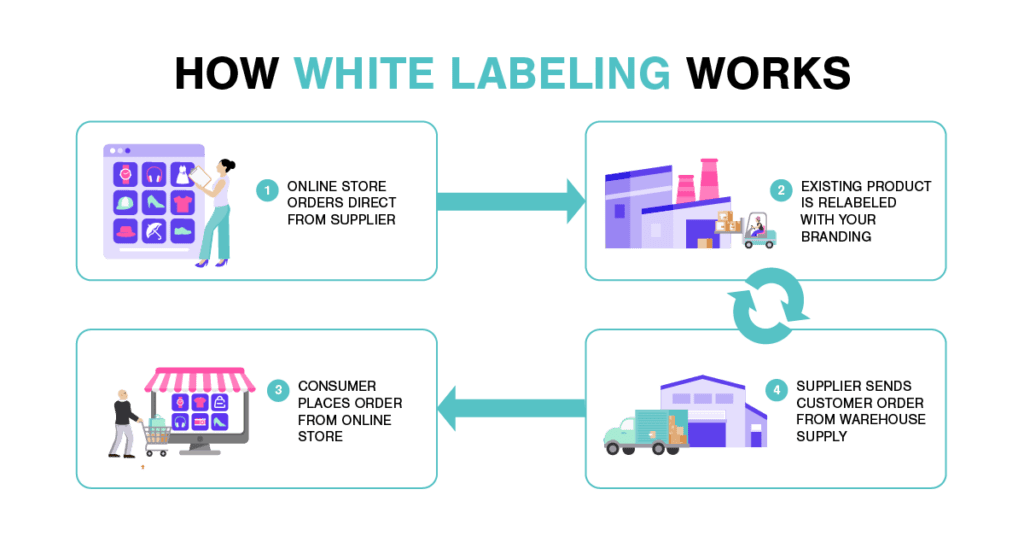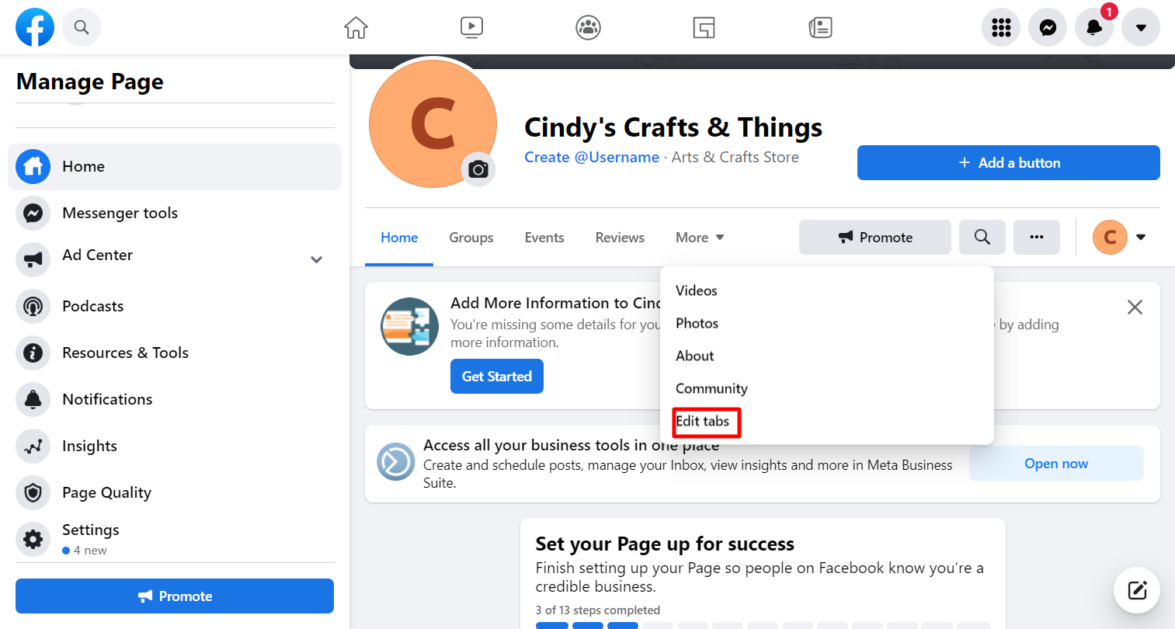As the world increasingly moves away from brick-and-mortar shopping, more and more entrepreneurs are looking to start their own online businesses. If you’re thinking about entering the ecommerce fray, there’s a lot you need to know to be successful when you sell online.
In 2020, more than 2 billion people purchased goods or services online, and ecommerce sales surpassed $4.2 trillion worldwide. By 2025, sales are expected to grow nearly 50% to $7.4 trillion.

It’s more than figuring out what to sell. It’s also establishing your target audience, choosing a business model, leveraging online marketplaces, accepting payments, figuring out shipping, marketing your products, and handling customer service.
What to Sell Online
There are several things to consider when choosing what to sell online. The first step is to narrow down your options by considering what you’re passionate about and what you know about. Once you know what you’re interested in, research the demand for that product or service online since not all product ideas are created equally.
You can use Google Trends, Exploding Topics, or other keyword research tools to see how popular certain terms are. Trending products are great, but online sellers shouldn’t base their entire business on them. The trends of online shopping change too frequently.
Another critical factor to consider is the competition. Suppose there are already a lot of businesses selling what you want to sell. In that case, you’ll need to find a way to differentiate yourself. Try offering unique products or services your competitors don’t. You may also focus on a niche market that isn’t as saturated.
How to Establish a Target Audience
Establishing your target audience is challenging, especially if you’re just starting. But it’s essential to take the time to think about who you want to sell to and why. Once you understand your target audience of online shoppers, you can start to build your ecommerce store around their needs and preferences.
Define Your Ideal Customer Base
Think about your ideal customers. Who are they? What do they need or want? What are their demographics? The better you understand your target audience, the more focused your marketing strategy will be.
Do Some Market Research
Once you have a good idea of your ideal customer, it’s time to do some market research. There are several ways to collect information about your target market, including online surveys, focus groups, and customer interviews. This research will help you understand your target audience’s needs, wants, and buying habits.
Build a Customer Profile
With this information, you can create a customer persona. This profile should include everything from demographics to psychographics and should be used to guide your marketing efforts.
Dropshipping

With dropshipping, you sell products without carrying any inventory. When a customer orders in your store, you simply contact the supplier, who will ship the products directly to the customer’s doorstep.
This way, you can focus on marketing and leave the nitty-gritty of shipping and handling to the supplier.
Many online stores integrate with dropshipping suppliers to automate the ordering process, so it’s virtually hands-off once you get it set up.
Print on Demand Products

Print on demand (POD) is a printing technology and business process in which products (clothing, wall art, mugs, etc.) are produced after receiving an order. This makes POD a low-risk way to start a business.
POD is an excellent option for businesses and individuals who need prints but don’t want to order large quantities or go through the hassle and expense of setting up their own printing press. POD also allows for shorter turnaround times than traditional printing methods, making it a convenient option for last-minute or urgent print jobs.
You can design products and only pay for them when a customer places an order. The difference between your cost and the sales price is your profit to keep.
Retail Arbitrage

The retail arbitrage model is a business model where individuals purchase products from retail stores at low prices and then sell those same products online at a higher price. This business model can be very profitable, but it requires much research and planning to succeed.
Wholesale
When you purchase goods in bulk from a wholesaler, you usually pay a much lower unit price compared to buying goods from a retailer. This lower cost per unit allows you to either sell the goods at a lower price than your competitors or increase your profit margin.
The wholesale model requires less capital than other business models, such as the retail model. This is because you do not need to purchase large quantities of inventory upfront. Instead, you can buy inventory as needed from your wholesaler. The wholesale model affords you a great deal of flexibility regarding the products you sell and the prices you charge. You are not locked into selling a particular product at a set price. Instead, you can offer various products at different price points, which allows you to appeal to a wider range of customers.
Private Labeling

A private label business model is where a company produces products or services sold under another brand. Private label businesses often offer products or services at a lower price than their branded counterparts because of scale and operational efficiency.
Private label businesses are found in many industries, including food and beverage, cosmetics, and cleaning products.
White Labeling

In a white-label business model, a company produces a product or service, and another company rebrands it as its own. The rebranding company can be an authorized reseller or simply an unauthorized imitator. In either case, the white label provider benefits from the selling power of the rebranding company’s name, while the rebranding company benefits from having a product or service to sell without developing it themselves.
Affiliate Marketing

Affiliate marketing is an online sales method that allows product owners to increase sales by letting others targeting the same audience sell their products for a commission. In simple terms, it is a referral system where one party pays another party a commission for referring customers.
Places to Sell Stuff Online
There are tons of places to sell online. It’s best to start small and expand your store to other sales channels as you grow.
Your Ecommerce Website
Your own online store is the best place to start selling. Using an ecommerce platform or website builder like Shopify, BigCommerce, or Nexcess Storebuilder for beginners. The best platform depends on several factors, including the type of product, your business model, level of desired control/technical skill, budget, and product catalog size.
All you need to get started is a domain name, and you’ll have a home base for your online business. You’ll pay a monthly fee but won’t have to worry about the technical aspects of maintaining your website.
No matter where else you sell, you can always direct your marketing campaigns to your main online storefront.
You’ll need to spend some time on search engine optimization (SEO) and marketing to drive traffic to your own website. This is why selling on other platforms can be helpful when you’re getting started.
Social Commerce
Facebook (and Facebook Marketplace)
Facebook is a popular social media platform with millions of daily and monthly users. You can sell on Facebook with a Facebook Shop – that can link directly to your ecommerce platform for easier order management.

If you’re not ready to create a Facebook Shop or just want to get rid of a few extra things you’ve got around the house, you can use the Facebook Marketplace to sell directly to another Facebook user.
Our guide to selling on Facebook can help you get started.
If Instagram is one of your favorite platforms, you can also link your Facebook Shop to Instagram and sell there. Read more about how to sell on Instagram.
Online Marketplaces
Amazon
Over 200 million people worldwide have Amazon Prime accounts, and millions more visit the site regularly. It is the world’s largest marketplace, so it’s worth adding to your long-term marketing strategy.
Amazon makes it easy to sell stuff online. They have a streamlined process for listing and shipping products, and they take care of all the payment processing for you. This makes it simpler and less time-consuming than selling through other online channels.
Check out our guide to selling on Amazon to learn more.
eBay

One of the most popular places to sell stuff online is eBay. People from all over the world use eBay to buy and sell items. You can sell nearly anything on eBay, ranging from clothes to electronics and everything in between.
Our guide on How to Sell on eBay will make it easier for you to get started.
Poshmark

Poshmark is an excellent way to reach more potential customers if you’re selling clothes, jewelry, or accessories. Check out how to sell on Poshmark to learn more.
Mercari

Mercari is another platform like Poshmark but offers more product categories like sporting goods, toys, and handmade items.
Etsy

If you’re selling handmade products, Etsy is a dedicated online marketplace that you’ll want to use. Like with eBay, you’ll pay listing fees for each product you list.
Accepting Payments
As a business owner, you’ll need to accept various payment methods, including credit cards, debit cards, and digital wallets like Apple Pay and Google Pay. You can do this via platforms like PayPal and Shop Pay (if you have a Shopify store). If you also accept credit card payments in-store, like if you have a pop-up shop, you’ll need a card reader, which you can usually get free or cheap from your payment processor.
No matter how you accept payments, you’ll pay transaction fees on everything except cash. Consider the transaction fees when you choose the credit card processor you’ll use.
Shipping Your Products
When you’re selling a physical product, unless you’re dropshipping, you’ll need to figure out how to get parcels to customers. You can offer in-person pick-up to cut shipping costs if you have a brick-and-mortar store. If you’re selling digital products, simply deliver via email.
When starting out, it may be easier to ship orders on your own with a flat rate shipping solution like USPS priority mail. But, as the business scales, you may find the order volume is just too much to keep up with yourself.
To keep shipping costs down, consider partnering with a 3PL that can pass shipping carrier discounts on to you, such as ShipBob or Fulfillment by Amazon (FBA). You’ll pass the fulfillment tasks to experts and won’t have to worry about inventory management or inventory storage. When possible, look for a carbon-neutral shipping option, so you can promote your commitment to the environment in your marketing efforts.
Marketing and Promoting Products
You can market and promote products with:
- Email marketing
- Content marketing
- Social media marketing
- Google Ads and Google Shopping Ads
Focus on creating high-quality content to draw in new customers. Whether it’s blog posts, social media posts, or even just product descriptions, quality content is essential for engaging potential customers and convincing them to make a purchase.
Track your results and analyze your performance, specifically conversions, site traffic, and sales. By regularly evaluating your marketing campaigns, you’ll be able to identify what’s working and what isn’t and adjust your strategy accordingly.
Customer Service
Your job isn’t finished after the sale. To ensure customer satisfaction and build audience loyalty, you must stay in touch. Periodically send customer surveys, and figure out how you’ll handle returns, refunds, discounts, etc. with unhappy customers so you can maintain a positive reputation for your small business.
FAQs
What Will You Sell Online?
Before you start to sell online, take time to validate your business idea. Research profitable products and business potential. Most importantly, develop a business plan and competitive analysis to help you figure out where you’ll fit into the market. Detail the types of products you’ll sell, your marketing spend, and your advertising strategy. The more you know upfront, the better off you’ll be.







